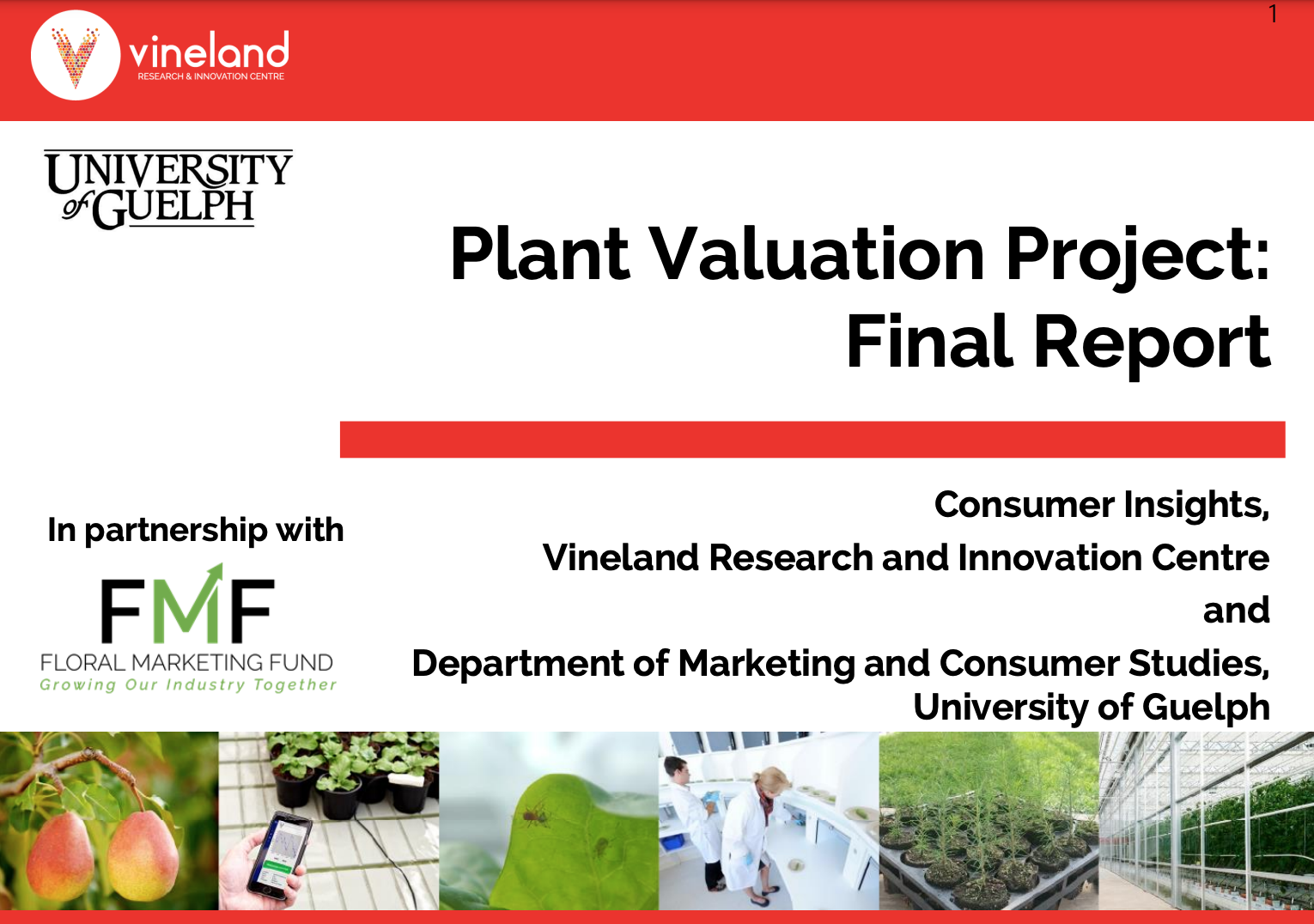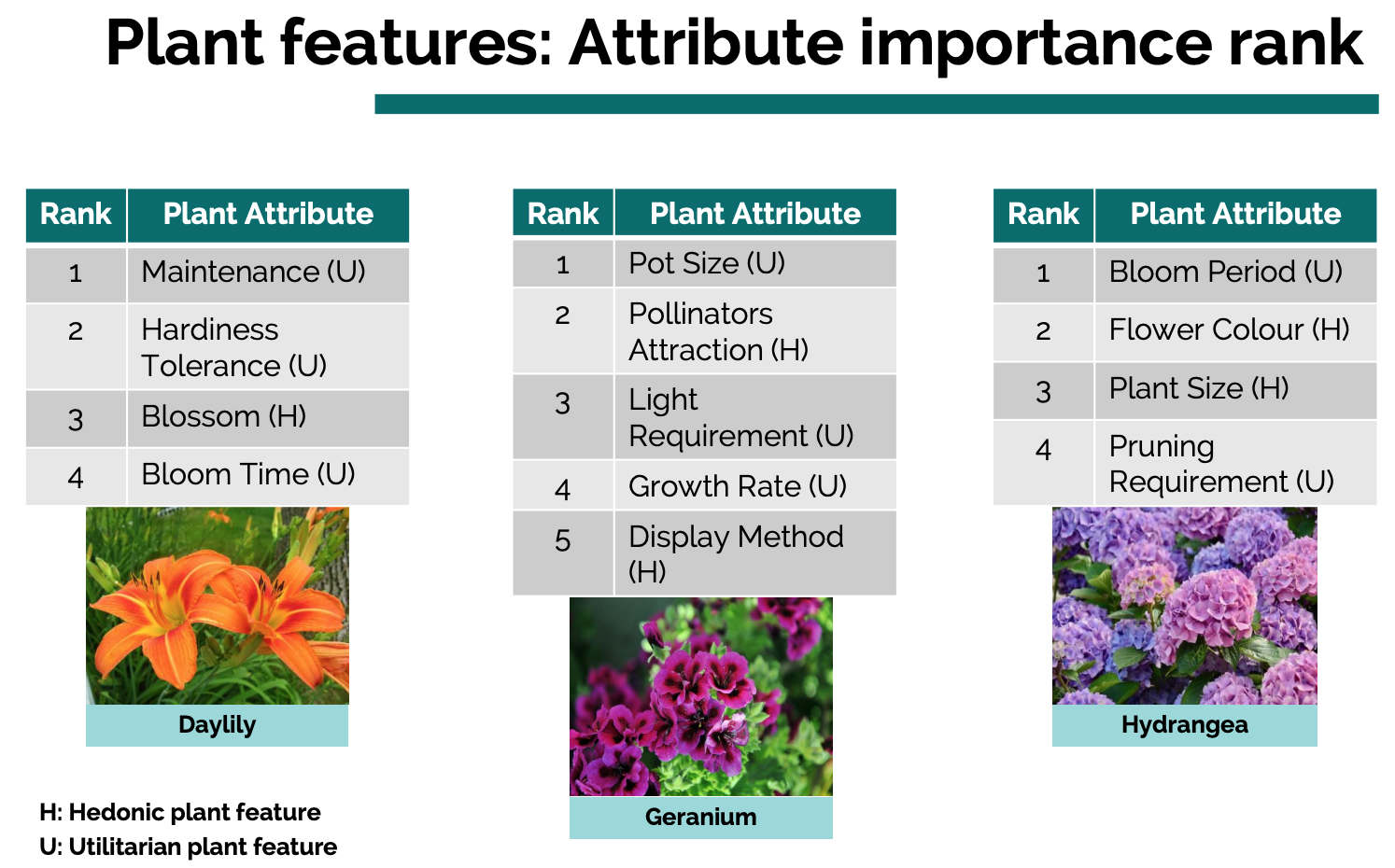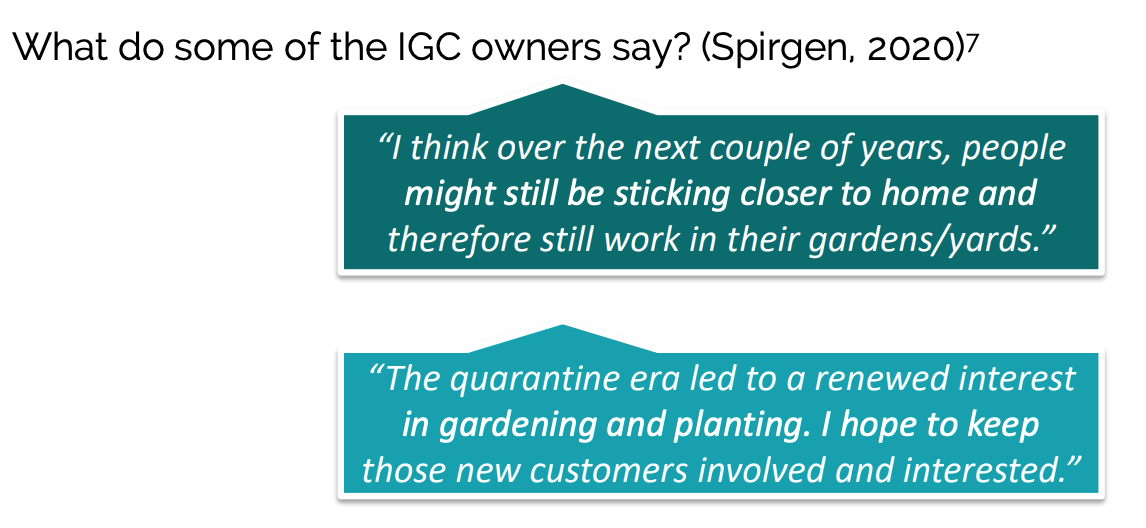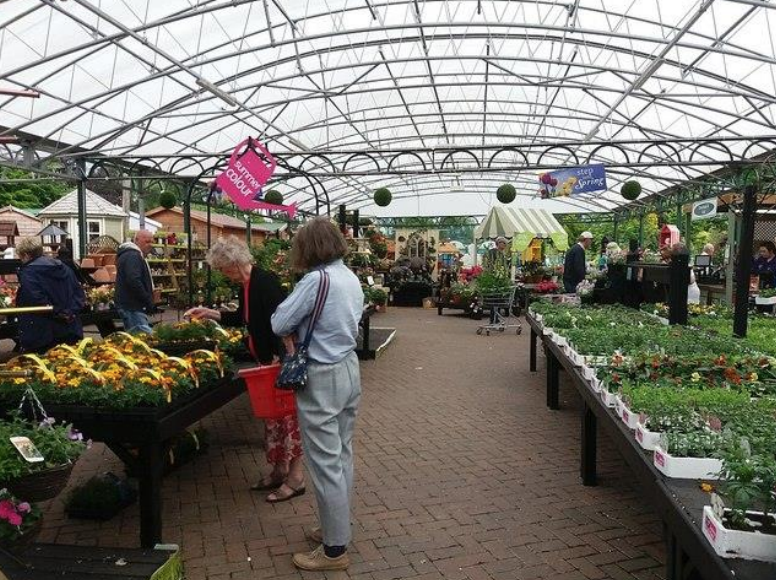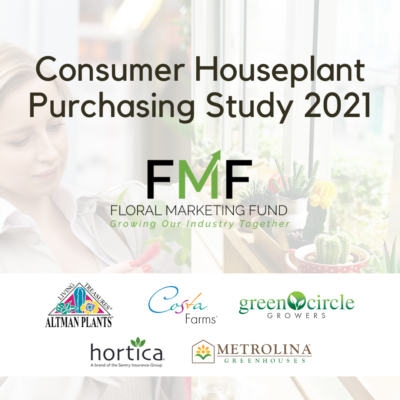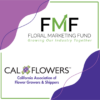Description
The Floral Marketing Fund (FMF), in partnership with the Vineland Research and Innovation Centre and the University of Guelph, are pleased to present the final results from a new study on consumers’ perceived value of nursery plants – focusing specifically on garden center consumers in both the US and Canada. The findings were presented through a webinar and this final report. The report takes an in-depth look at what plant features such as longevity, pot size, and care convenience increase the value of plants for the consumer. The results provide guidance not only for garden centers but for retailers and wholesalers through value-based pricing, informing inventory selection, and sharing strategies on how to market other quality features to consumers.
The study was funded through the FMF and conducted by researchers Dr. Alexandra Grygorczyk and Dr. Amy Bowen of the Vineland Research and Innovation Centre and Dr. Juan Wang of the University of Guelph with industry support and guidance from the Canadian Nursery and Landscape Association and Landscape Ontario. The project had three phases of data collection: 1) Path to purchase interviews at garden centers in 2020. 2) Online survey of both Canadian and US consumers. 3) In-person vs. online shopping experience interviews in 2021.
“This comprehensive and in-depth report provides a ton of valuable information on what influences consumers’ purchasing behaviors both in-store and online. In particular, the results show several marketing opportunities to increase sales and encouraging responses from consumers with regards to willingness to pay allowing for pricing flexibility,” notes the FMF’s Communications Manager, Karin Krause.
Some key findings of the report include:
- Reasons why consumers choose to shop at garden centers –Revealing that primary reason is the large plant selection. The later pandemic results (2021) also showed increased interest in deals, offers, and promotions.
- Decision making for purchasing – Concluding that final purchases were heavily impacted by the dimensions of the plant (does it fit their space?) and consultation with garden center staff. The report recommends that stores stock more inventory in pot sizes to which consumers are less price-sensitive, which could lead to a larger profit margin.
- Impulse buying of plants was low, but the report shows an opportunity to market plant care products to encourage additional impulse buys.
- Comparisons between US and Canadian consumers – the report found that they were quite similar in terms of their preferences for plant features. Both segments generally liked larger plant sizes, moderate growth rates, and longer bloom periods with a preference for low to medium maintenance plants.
- Decision making behind shopping in store vs. online – The number one reason that consumers shop in stores instead of online is customer service and being able to directly interact with the plants and staff. Investing in staff training is key to maintaining this atmosphere.
Huge Opportunities with Pricing
Price was often an afterthought, with 34% of people not noticing the price at all and another 34% noticing the price but choosing not to make any price comparison with other plants in the store. This affords the industry flexibility in pricing. Willingness to pay is generally higher for more utilitarian plant features with Canadian consumers, in particular, looking for hardiness tolerance and specific bloom time. Both in-store and online, consumers are also willing to pay more for product warranty and easy returns.
To learn more about additional marketing and inventory opportunities for garden centers, along with seeing how the pandemic impacted plant shopping, the FMF encourages you to view the recorded webinar presentation below. The results were presented directly by researcher Dr. Amy Bowen, Director of Consumer Insights at Vineland Research and Innovation Centre. With 12 years of experience in research and innovation, she leads a team of researchers to understand the drivers that impact preference and choice to create value-added products for the horticultural sector.
The Floral Marketing Fund thanks all of the program sponsors and researchers for making this impactful study possible. To view our other consumer research reports and collaborative industry efforts click here, and consider making a contribution to support future studies.
See the Results:

